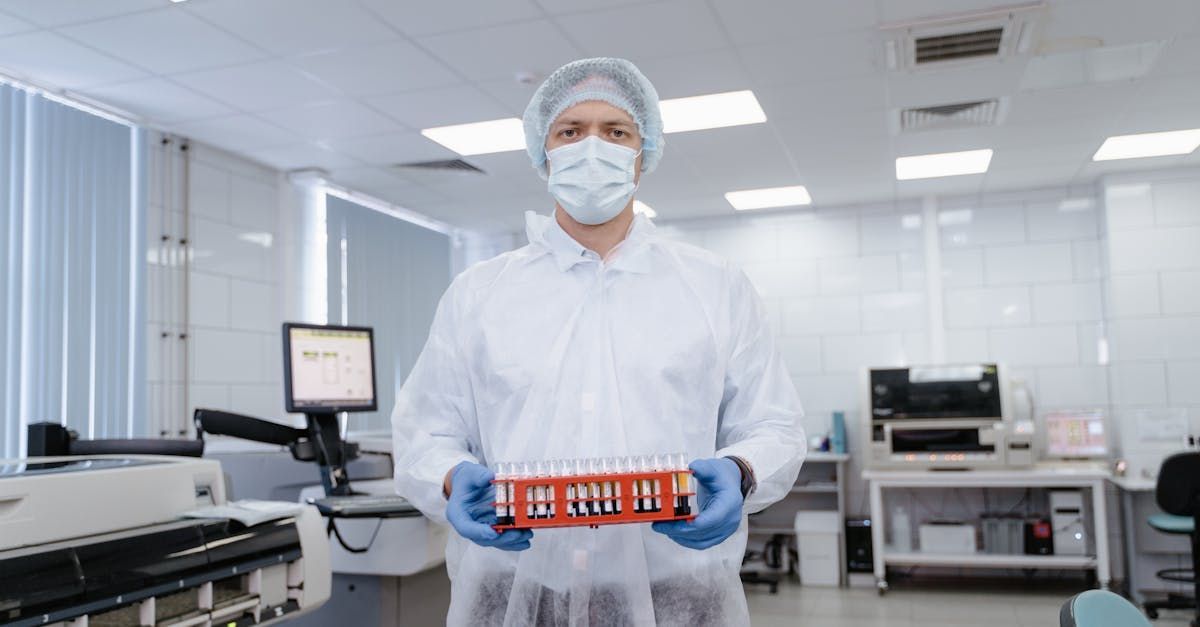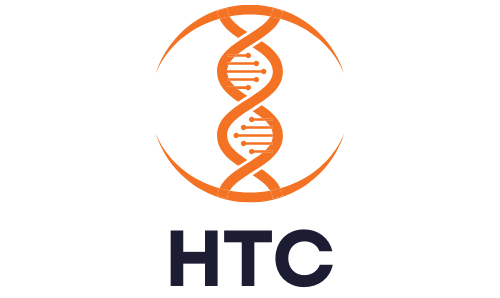HealthTech Innovations to Watch in The Future of Patient Care
The healthcare industry is undergoing a transformative evolution, driven by rapid technological advancements and shifting patient needs. These changes are paving the way for innovative solutions that enhance the delivery, accessibility, and management of healthcare. Technological breakthroughs, from personalized medicine to artificial intelligence, are not only improving patient outcomes but also making healthcare more efficient and cost-effective.
As the landscape continues to evolve, it is crucial to stay informed about the latest HealthTech innovations that are shaping the future of patient care. This article aims to highlight some of the most promising HealthTech advancements and explore the investment opportunities they present. By understanding these innovations and their potential impact, investors and stakeholders can make informed decisions and capitalize on the transformative potential of the HealthTech sector.
Definition and Significance of Personalized Medicine
Personalized medicine, also known as precision medicine, is an innovative approach that tailors medical treatment to the individual characteristics of each patient. This approach considers a patient’s genetic makeup, environmental factors, and lifestyle choices to develop highly personalized therapies and treatment plans. The significance of personalized medicine lies in its potential to increase the efficacy of treatments, minimize adverse effects, and improve overall patient outcomes by addressing the unique needs of each individual.
Technologies Enabling Personalized Medicine
The development and implementation of personalized medicine are driven by several cutting-edge technologies:
- Genomics: The study of an individual’s genes and their interactions is central to personalized medicine. Genomic sequencing allows for the identification of genetic mutations and variations that may influence disease risk and treatment response.
- Proteomics: This field involves the large-scale study of proteins, which play a critical role in nearly all biological processes. By analyzing the protein expression profiles of patients, researchers can gain insights into disease mechanisms and identify potential therapeutic targets.
- Bioinformatics: The integration of computational tools and software to manage and analyze biological data is essential for personalized medicine. Bioinformatics helps in interpreting complex genomic and proteomic data to uncover patterns and relationships that inform treatment decisions.
Key Players
Several companies are at the forefront of personalized medicine, developing innovative solutions to enhance patient care:
- Notable Labs: Specializes in predictive precision medicines for cancer care. Their platform uses advanced genomic data analysis and machine learning algorithms to predict the most effective therapies for individual patients based on their unique molecular profiles.
- Tempus: Focuses on leveraging data and artificial intelligence to personalize cancer treatment. Tempus integrates clinical and molecular data to provide insights that help physicians make data-driven treatment decisions.
- GenomOncology: Provides precision medicine software solutions that support the integration and analysis of genomic data in clinical practice.
- Caris Life Sciences: Utilizes comprehensive molecular profiling to offer personalized treatment options for cancer patients.
- Pangea Biomed: Develops advanced diagnostic tools to guide personalized cancer therapies.
- Strata Oncology: Focuses on precision oncology, using molecular profiling to match cancer patients with the most effective therapies.
- First Ascent Biomedical: Specializes in personalized cancer treatment by integrating molecular and clinical data to identify the best therapeutic options.
Investment Opportunities and Challenges
The personalized medicine market presents significant investment opportunities but also comes with challenges that need to be addressed:
- Data Integration and Regulatory Oversight: The successful implementation of personalized medicine relies on the integration of diverse datasets, including genomic, proteomic, and clinical data. Ensuring data accuracy, privacy, and interoperability is crucial. Additionally, navigating the regulatory landscape to gain approval for personalized therapies can be complex and time-consuming.
- Reimbursement Models: Developing sustainable reimbursement models for personalized treatments is a challenge. Payers need to be convinced of the clinical and economic benefits of personalized medicine to provide adequate coverage. Demonstrating cost-effectiveness and improved patient outcomes through robust clinical evidence is essential to secure reimbursement.
Investing in personalized medicine offers the potential for high returns due to the growing demand for targeted therapies and the increasing adoption of precision healthcare. However, investors must carefully evaluate the technological capabilities, regulatory strategies, and market positioning of companies to mitigate risks and maximize returns.
Virtual Care and Telehealth: Expanding Access to Healthcare
The COVID-19 pandemic significantly accelerated the adoption of virtual care and telehealth services. As healthcare systems worldwide grappled with the challenges of managing patient care while minimizing in-person interactions, telehealth emerged as a critical solution. Regulatory barriers were temporarily lifted, reimbursement policies were adapted, and both patients and providers became more comfortable with remote consultations. This rapid adoption demonstrated the feasibility and benefits of virtual care, setting the stage for its continued growth even beyond the pandemic.
Several companies have established themselves as leaders in the virtual care and telehealth space, offering innovative solutions that enhance access to healthcare services:
- Teladoc: A pioneer in the telehealth industry, Teladoc provides virtual healthcare services that connect patients with healthcare providers through video, phone, or app-based consultations. Teladoc’s comprehensive suite of services includes general medical, mental health, dermatology, and more.
- Amwell: Known for its user-friendly telehealth platform, Amwell offers a wide range of virtual care services, including urgent care, behavioral health, and chronic disease management. Amwell partners with health systems, insurers, and employers to deliver accessible telehealth solutions.
- Doctor on Demand: This platform offers on-demand video consultations with board-certified physicians, covering urgent care, mental health, and preventive care. Doctor on Demand focuses on providing high-quality care with a seamless patient experience.
For chronic condition management, two notable companies are:
- Omada Health: Specializes in digital health programs designed to help individuals manage chronic conditions such as diabetes, hypertension, and obesity. Omada Health combines personalized coaching, interactive lessons, and digital tracking tools to support long-term health improvements.
- Livongo: Focuses on empowering people with chronic conditions to live better and healthier lives through data-driven insights and personalized coaching. Livongo’s platform integrates connected devices, such as glucose meters and blood pressure monitors, with real-time feedback and support.
Investing in virtual care and telehealth offers substantial opportunities, but several challenges must be navigated:
- Reimbursement Models and Data Privacy: One of the critical challenges is the development and stabilization of reimbursement models for virtual care services. While temporary measures during the pandemic facilitated telehealth adoption, establishing long-term reimbursement policies that reflect the value of virtual care is essential. Additionally, ensuring robust data privacy and security is crucial, given the sensitive nature of healthcare information. Compliance with regulations such as HIPAA (Health Insurance Portability and Accountability Act) in the U.S. and GDPR (General Data Protection Regulation) in Europe is mandatory.
- Integration with Existing Healthcare Systems: Seamlessly integrating virtual care solutions with existing healthcare infrastructure is vital for maximizing their effectiveness. This integration includes connecting telehealth platforms with electronic health records (EHRs) and other health information systems to ensure continuity of care and comprehensive patient management. Overcoming technical and interoperability challenges is necessary to achieve a fully integrated healthcare ecosystem.
Virtual care and telehealth represent transformative shifts in how healthcare services are delivered, offering the potential to expand access, improve convenience, and enhance patient outcomes. As the healthcare industry continues to embrace these innovations, the long-term impact of virtual care will likely include greater healthcare accessibility, especially for underserved populations, and more efficient management of chronic conditions. Investors who understand the reimbursement landscape, prioritize data privacy, and support seamless integration with traditional healthcare systems can capitalize on the growing demand for virtual care and contribute to shaping the future of healthcare delivery.
Artificial Intelligence (AI) and Machine Learning in Healthcare
Artificial intelligence (AI) and machine learning (ML) are revolutionizing healthcare by offering innovative solutions across various domains. AI and ML algorithms can analyze vast amounts of data quickly and accurately, leading to improvements in diagnostics, treatment planning, drug discovery, and patient management. These technologies are enabling personalized medicine, enhancing clinical decision support, and streamlining operational efficiencies in healthcare settings.
Several companies are at the forefront of applying AI and ML to different aspects of healthcare, driving significant advancements and setting new standards in the industry:
- Drug Discovery
- Recursion Pharmaceuticals: Utilizes AI and high-throughput screening to discover new drug candidates and repurpose existing drugs. By analyzing cellular images and data, Recursion accelerates the drug discovery process and identifies potential therapies for various diseases.
- Insitro: Combines machine learning with biology to transform drug discovery and development. Insitro uses AI to generate predictive models of disease progression and treatment response, improving the efficiency and accuracy of identifying viable drug candidates.
- Clinical Decision Support
- Viz.ai: Focuses on using AI to enhance clinical workflows and improve patient outcomes. Viz.ai's software analyzes medical imaging data to detect early signs of conditions such as stroke, enabling faster and more accurate diagnosis and treatment.
- Aidoc: Provides AI-powered solutions for radiology, assisting in the detection and triage of critical conditions. Aidoc's algorithms analyze medical images in real time, alerting radiologists to urgent findings and helping prioritize patient care.
Investing in AI and ML in healthcare presents substantial opportunities, but it also involves navigating several challenges:
- Data Quality and Algorithmic Bias: The effectiveness of AI and ML models heavily relies on the quality of data used for training. Inaccurate, incomplete, or biased data can lead to flawed algorithms and potentially harmful outcomes. Ensuring access to high-quality, diverse datasets and implementing robust data validation processes are crucial for developing reliable AI solutions. Additionally, addressing algorithmic bias is essential to ensure equitable healthcare outcomes across different patient populations.
- Regulatory Oversight and Ethical Considerations: AI and ML applications in healthcare are subject to stringent regulatory oversight to ensure patient safety and efficacy. Navigating the regulatory landscape requires a thorough understanding of guidelines and compliance requirements set by bodies such as the FDA in the U.S. and the EMA in Europe. Ethical considerations, including patient privacy, informed consent, and transparency in AI decision-making, must also be addressed to build trust and acceptance among healthcare providers and patients.
AI and ML are poised to transform healthcare by improving diagnostics, accelerating drug discovery, and enhancing clinical decision support. Companies like Recursion Pharmaceuticals, Insitro, Viz.ai, and Aidoc are leading the way, demonstrating the potential of these technologies to revolutionize patient care. However, investors must be mindful of the challenges related to data quality, algorithmic bias, regulatory compliance, and ethical considerations. By supporting companies that prioritize these aspects, investors can contribute to the advancement of AI-driven healthcare solutions that deliver significant clinical and operational benefits while ensuring patient safety and equity.
Digital therapeutics (DTx) represent a category of evidence-based therapeutic interventions that utilize software programs to treat, manage, or prevent diseases. These interventions are designed to deliver therapeutic content directly to patients, often through mobile applications, wearable devices, or other digital platforms. Digital therapeutics aim to complement or replace traditional treatments, providing patients with accessible, scalable, and personalized healthcare solutions. The role of digital therapeutics extends beyond just treatment; they also play a critical part in patient engagement, adherence to treatment plans, and ongoing disease management.
Several companies are pioneering the digital therapeutics space, offering innovative solutions to address various health conditions:
- Pear Therapeutics: Known for its digital solutions targeting substance use disorders. Pear’s reSET and reSET-O products are FDA-approved digital therapies designed to treat substance use disorder and opioid use disorder, respectively. These therapies deliver cognitive behavioral therapy (CBT) through a mobile app, supporting patients in their recovery journey.
- Omada Health: Specializes in digital chronic condition management, including diabetes prevention, diabetes management, hypertension, and musculoskeletal care. Omada’s programs combine personalized coaching, digital tools, and connected devices to help individuals make sustainable health improvements.
- Welldoc: Focuses on chronic disease management through its BlueStar platform, which is an FDA-cleared digital therapeutic for type 2 diabetes. Welldoc’s solutions provide personalized, real-time guidance and support to help patients manage their condition more effectively.
Investing in digital therapeutics offers significant potential but comes with its own set of challenges:
- Reimbursement Models and Regulatory Oversight: Securing reimbursement for digital therapeutics is a complex and evolving process. Unlike traditional pharmaceuticals, digital therapeutics often face additional hurdles in proving their value to payers. Investors should look for companies that have robust clinical evidence demonstrating their efficacy and cost-effectiveness. Navigating the regulatory landscape is also crucial, as digital therapeutics must obtain necessary approvals from regulatory bodies like the FDA or EMA, which require rigorous validation and compliance.
- Integration with Existing Healthcare Systems and Ensuring Data Security: For digital therapeutics to be effective, they must seamlessly integrate with existing healthcare systems, such as electronic health records (EHRs) and clinical workflows. This integration can be challenging and requires robust interoperability standards. Additionally, ensuring data security and patient privacy is paramount, given the sensitive nature of health information. Investors should prioritize companies with strong cybersecurity measures and compliance with regulations like HIPAA in the U.S. and GDPR in Europe.
Digital therapeutics hold immense promise for transforming healthcare by providing scalable, personalized, and evidence-based interventions. Companies like Pear Therapeutics, Omada Health, and Welldoc are leading the charge, offering innovative solutions for substance use disorders and chronic condition management. However, investors must navigate challenges related to reimbursement, regulatory oversight, integration with healthcare systems, and data security. By supporting companies that address these challenges, investors can help drive the adoption of digital therapeutics, improving patient engagement and outcomes across diverse health conditions.
Wearable devices and remote monitoring technologies are revolutionizing patient care by providing continuous, real-time health data that can enhance disease prevention, management, and treatment. These technologies enable patients and healthcare providers to track vital signs, activity levels, and other health metrics outside traditional clinical settings, promoting proactive health management and early intervention. Wearable and remote monitoring devices have shown significant promise in managing chronic conditions such as diabetes, cardiovascular diseases, and respiratory disorders, improving patient outcomes and reducing healthcare costs.
Several key players are leading the wearable and remote monitoring technology market, offering a range of consumer and medical-grade devices:
- Consumer Wearables:
- Fitbit: Offers a variety of fitness trackers and smartwatches that monitor physical activity, heart rate, sleep patterns, and more. Fitbit devices provide users with insights into their daily health and fitness, encouraging healthier lifestyles.
- Apple: The Apple Watch is a multifunctional device that tracks health metrics such as heart rate, ECG readings, blood oxygen levels, and physical activity. Its integration with Apple Health and third-party health apps makes it a powerful tool for personal health management.
- Garmin: Known for its GPS-enabled fitness and wellness devices, Garmin offers wearables that track a wide range of health metrics, including heart rate variability, stress levels, and sleep quality.
- Medical-Grade Devices:
- Biotricity: Specializes in medical-grade wearables designed for continuous cardiac monitoring. Their Bioflux device provides real-time ECG monitoring and analysis, helping detect and manage cardiac events more effectively.
- VitalConnect: Develops wearable biosensors that monitor vital signs such as heart rate, respiratory rate, skin temperature, and activity levels. Their VitalPatch device is used in both clinical and remote monitoring settings to provide continuous health data.
Investing in wearable and remote monitoring technologies offers significant potential but also presents unique challenges:
- Data Integration and Reimbursement Models: One of the primary challenges is integrating data from wearable devices into existing healthcare systems, such as electronic health records (EHRs). Interoperability is crucial for ensuring that health data can be seamlessly shared and utilized by healthcare providers. Additionally, securing reimbursement for wearable and remote monitoring technologies can be complex. Investors should seek companies with strong partnerships with healthcare providers and payers, as well as a clear strategy for demonstrating the clinical and economic value of their devices.
- Patient Adherence and Data Privacy: The success of wearable and remote monitoring technologies depends on patient adherence and the ability to consistently collect accurate data. Companies must design user-friendly devices that encourage regular use and engagement. Ensuring data privacy and security is also paramount, given the sensitive nature of health information. Investors should prioritize companies that adhere to strict data protection regulations and implement robust cybersecurity measures.
Wearable and remote monitoring technologies have the potential to transform patient care by providing continuous, real-time health data that enhances disease prevention, management, and treatment. Key players like Fitbit, Apple, and Garmin in the consumer wearables market, along with Biotricity and VitalConnect in the medical-grade device market, are driving innovation and adoption of these technologies. However, investors must navigate challenges related to data integration, reimbursement models, patient adherence, and data privacy. By supporting companies that address these challenges, investors can help drive the growth and impact of wearable and remote monitoring technologies, ultimately improving patient outcomes and reducing healthcare costs.
Investment Opportunities and Challenges
The HealthTech sector is experiencing rapid growth driven by technological advancements, increasing healthcare demands, and a shift towards more personalized and efficient care. This dynamic environment presents substantial investment opportunities in areas such as digital health, telemedicine, AI-driven healthcare solutions, and wearable technologies. However, navigating this landscape requires a deep understanding of the unique challenges and considerations inherent in HealthTech investments.
Key Considerations for Investors
Regulatory Environment and Reimbursement Models
- Regulatory Environment: HealthTech startups must navigate a complex regulatory landscape. Regulatory bodies like the FDA in the United States and the EMA in Europe have stringent requirements for approving medical devices, digital health solutions, and pharmaceuticals. Investors should assess a company's regulatory strategy, including its progress in obtaining necessary approvals and its compliance with existing regulations.
- Reimbursement Models: The ability to secure reimbursement from insurance companies and government programs is crucial for the commercial success of HealthTech solutions. Investors need to understand the reimbursement landscape for the specific technology and evaluate the company's strategy for demonstrating value to payers. Companies with strong relationships with payers and a clear path to reimbursement are better positioned for success.
Long-Term Perspective and Competitive Landscape Evaluation
- Long-Term Perspective: HealthTech investments often require a long-term view due to the lengthy development and approval processes. Investors should be prepared for extended timelines before seeing returns and should assess the startup's financial health and cash runway to ensure it can sustain operations throughout these periods.
- Competitive Landscape Evaluation: Understanding the competitive landscape is essential for identifying a company's unique value proposition and potential market position. Investors should analyze the strengths and weaknesses of competitors, the barriers to entry, and the company's competitive advantages, such as proprietary technology or strategic partnerships.
Intellectual Property Positions and Scalability Potential
- Intellectual Property (IP) Positions: A strong IP portfolio is critical for protecting innovations and maintaining a competitive edge. Investors should evaluate the breadth and depth of a company's patents, trademarks, and other IP assets. Companies with robust IP protection are better equipped to defend their market position and attract strategic partnerships.
- Scalability Potential: The ability to scale is a key determinant of a HealthTech startup's long-term success. Investors should assess the scalability of the company's technology, business model, and operational infrastructure. This includes evaluating the potential for market expansion, the adaptability of the technology to different markets, and the company's strategy for scaling operations efficiently.
Strategies for Successful Investments in HealthTech
- Due Diligence: Conduct thorough due diligence to understand the startup's technology, market potential, regulatory strategy, and financial health. Engage with industry experts, review clinical data, and assess the company's leadership team.
- Supportive Partnerships: Encourage startups to form strategic partnerships with healthcare providers, payers, and other stakeholders. These partnerships can provide valuable resources, expertise, and market access, enhancing the startup's chances of success.
- Focus on Value Creation: Prioritize investments in companies that demonstrate clear value creation for patients, providers, and payers. This includes improving patient outcomes, reducing healthcare costs, and enhancing the efficiency of healthcare delivery.
- Risk Management: Develop a risk management strategy that accounts for the unique challenges in HealthTech, such as regulatory risks, technological risks, and market adoption risks. Diversify investments to mitigate risk and balance potential returns.
- Ongoing Monitoring and Support: Actively monitor the progress of portfolio companies and provide ongoing support. This includes helping navigate regulatory hurdles, facilitating partnerships, and offering strategic guidance to drive growth and innovation.
Investing in HealthTech offers significant opportunities for those who can navigate its complexities. By understanding the regulatory environment, evaluating reimbursement models, taking a long-term perspective, assessing the competitive landscape, and ensuring strong intellectual property positions and scalability potential, investors can make informed decisions. Successful investments in HealthTech require thorough due diligence, strategic partnerships, a focus on value creation, effective risk management, and ongoing support. By adopting these strategies, investors can maximize their returns while contributing to the advancement of healthcare technologies that improve patient care and outcomes.
Recap of the Importance of HealthTech Innovations in Shaping the Future of Patient Care
HealthTech innovations are revolutionizing the healthcare industry by enhancing the precision, accessibility, and efficiency of patient care. From personalized medicine to virtual care, AI-driven solutions, digital therapeutics, and wearable technologies, these advancements hold the promise of transforming healthcare delivery and improving patient outcomes. They enable more accurate diagnoses, tailored treatments, and continuous patient monitoring, significantly contributing to the overall quality of care.
Potential for Improved Outcomes, Enhanced Accessibility, and Reduced Costs
The integration of HealthTech innovations into the healthcare system can lead to numerous benefits:
- Improved Outcomes: Personalized medicine and AI-driven clinical decision support systems can significantly enhance treatment efficacy, reduce adverse effects, and improve overall patient health.
- Enhanced Accessibility: Virtual care and telehealth platforms expand access to healthcare services, particularly for underserved populations, by eliminating geographical barriers and providing remote consultations.
- Reduced Costs: Digital therapeutics and remote monitoring technologies can help manage chronic conditions more effectively, reducing hospital admissions and overall healthcare costs. Additionally, AI-driven drug discovery and development can streamline the process, making treatments more affordable.
Encouragement for Investors to Adopt a Long-Term Perspective and Deep Understanding of Regulatory and Reimbursement Landscapes
Investing in HealthTech requires a comprehensive understanding of the regulatory and reimbursement environments. These landscapes are complex and can significantly impact the development and commercial success of HealthTech innovations. Investors should:
- Adopt a Long-Term Perspective: Recognize that HealthTech investments often involve extended timelines due to rigorous regulatory approval processes and the need for clinical validation. Patience and a long-term view are crucial for realizing returns.
- Understand Regulatory Requirements: Stay informed about the regulatory requirements for different HealthTech solutions, including digital health apps, medical devices, and pharmaceuticals. Collaborate with companies that have robust regulatory strategies and compliance measures in place.
- Evaluate Reimbursement Models: Assess the potential for securing reimbursement from insurance companies and government programs. Support startups that demonstrate a clear path to reimbursement and value creation for payers.
Investors and stakeholders should gain insights into the most promising HealthTech innovations and make informed decisions to capitalize on the opportunities within this dynamic and transformative sector. The future of healthcare lies in leveraging technology to create more efficient, effective, and accessible care for all. Through strategic investments and a deep understanding of the industry, investors can play a pivotal role in driving this transformation and shaping the future of patient care.










